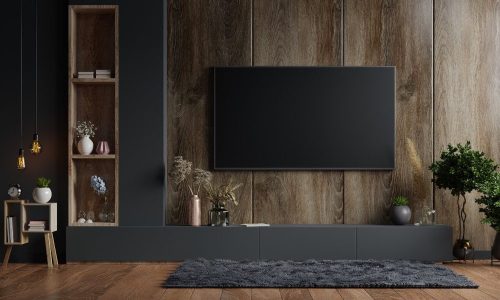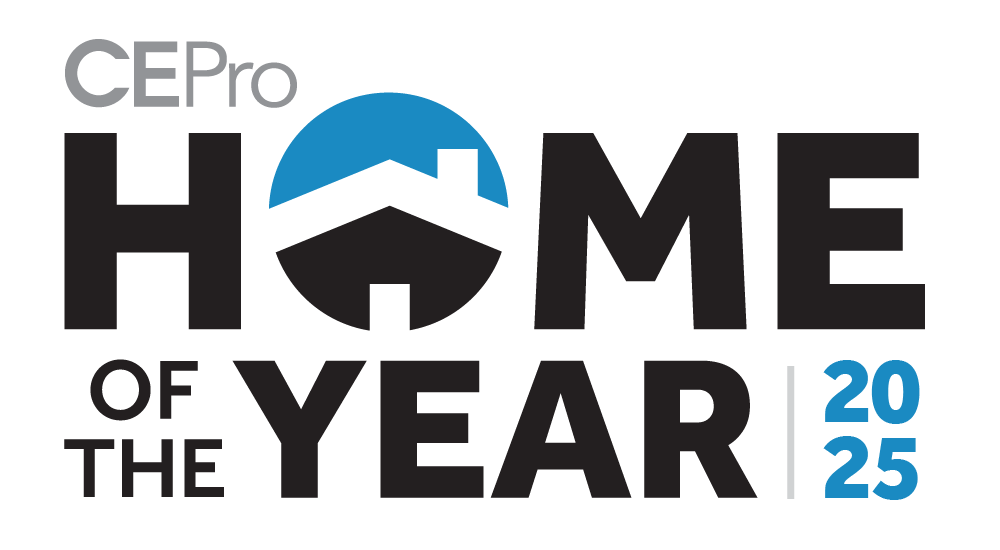Mounting a TV on a wall is a task that demands precision, the right tools, and a clear understanding of safety protocols. For professional integrators, mastering how to mount a TV on a wall is more than just aesthetics. It’s about ensuring a secure and optimal viewing experience for clients, whether you’re working on a residential setup or outfitting a commercial space.
This guide breaks down the key steps involved in the mounting process, and along the way, we’ll highlight crucial safety considerations so that whether you’re a seasoned integrator or newer to the field, this step-by-step guide can serve as a go-to reference for efficient and safe TV wall mounting.
It’s also worth noting that all of this advice is for mounting a TV to wooden wall studs. Mounting a TV into metal studs, or into brickwork or stone like with a fireplace, will require a completely different approach and set of tools compared to what is outlined here.
Gear Needed to Wall Mount a TV
Before you get started with anything, first make sure you have the proper tools and gear needed to mount the TV to the wall:
- Pencil or painters tape (for marking points)
- Tape measure
- Stud finder
- Level
- Power drill with drill bit
- Screwdriver
- The TV wall mount
- And, perhaps most importantly, a partner
Don’t try to mount a TV to the wall alone. Despite their thinness, TVs can still get pretty heavy with all the processing equipment they carry. Have someone help you out so you can dial in the position without having to worry about dropping that expensive new display on the floor.
How to Mount a Flat Screen TV to a Wall in 7 Simple Steps
- Choose TV Mount
- Choose TV Location and Height
- Find the Wall Studs
- Mark and Confirm Your Pilot Holes
- Mount the TV Bracket to the Wall
- Attach the Mounting Plate to the TV
- Attach the TV Mounting Plate Onto the TV Wall Mount
Choose TV Mount
The first true step in wall mounting a TV is finding the right TV wall mount for the project. What constitutes the ‘right’ TV mount will ultimately depend upon your needs, but we have a general list of recommendations based on the different types of TV mounts. We also have a more comprehensive TV mount buying guide that goes into the selection process in more detail, however, to give a quick overview of the most common types of TV mounts and their uses:
- The fixed mount is the simplest and usually the cheapest type of TV mount you can buy, but they don’t offer much else aside from holding the TV in place.
- Swivel mounts allow a TV to pivot along a horizontal axis.
- Full motion TV wall mounts (also known as “fully articulating mounts”) can extend, tilt and swivel along multiple axis, but they’re also more expensive.
- Motorized TV mounts allow your to automate and remotely control the mount’s movement, allowing for a convenient (and admittedly cool) viewing experience at a higher cost.
For a comprehensive listing of companies that make mounts, lifts and concealment hardware for flat screen TVs, you can also check out both AV-IQ and CE Pro-IQ.
Choose TV Location and Height
By far the biggest concern people have when mounting a TV is how high to place it, as an improperly positioned TV can lead to poor image quality, neck pain and eye strain among many other issues. A good rule of thumb is that when a person sits down, their line of sight hits the center of the TV. However, much like the English language, there are a series of conditionals that come attached to that statement. Our more in-depth guide on finding the best TV viewing angle and height, addresses these conditionals in greater detail.
Other factors you’ll want to consider when deciding where to mount a TV on the wall include:
- The general layout of the room
- Where the intended audience will sit.
- How a TV mount might attach to the back of the TV,
- Audience height
- And even the size of the TV itself.
Additional elements you might want to consider include the TV’s access to power, storage for media components, whether the TV can clear certain obstructions on tilt, swing, or articulating mounts, how much sunlight the TV gets exposed to, and even how you plan to conceal the cables.
Find the Wall Studs
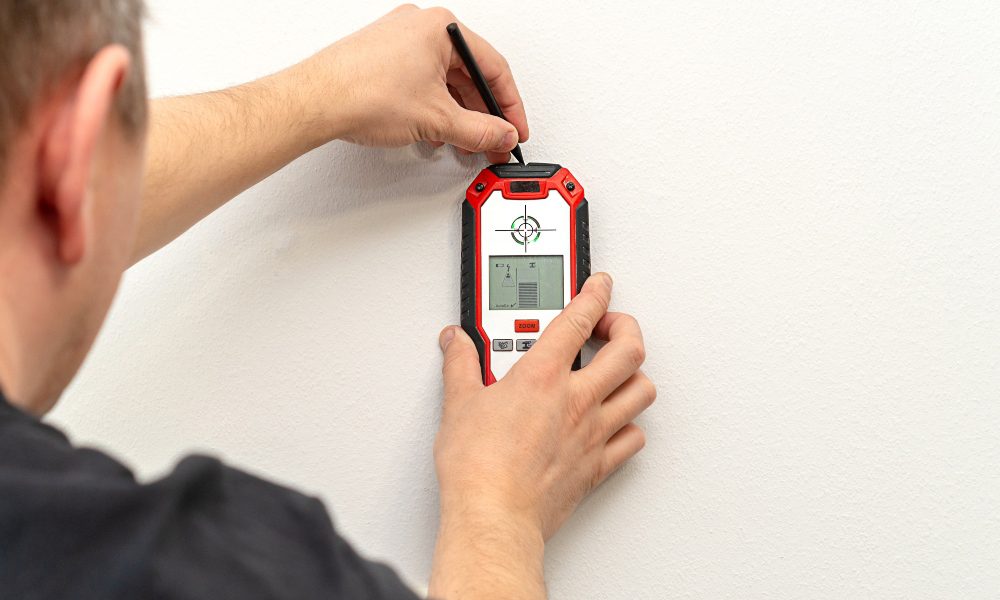
When mounting a flat screen TV to the wall, you’re always going to want to affix the mount to studs for stability. Once you’ve figured out the perfect location, it’s time to find the studs. The best and most reliable method is to use a stud finder tool to do so.
Best practices dictate using two studs to mount a flat screen TV to the wall, however some mounts might even need three. And though some mounts claim to require only a single stud to mount, it’s better to be safe than sorry. Confer with the mount to determine how many studs it needs.
With all that said, once you’ve located two studs to support the TV mount, mark the location of each stud’s center with a pencil.
Take note that metal studs are not conducive to mounting flat-screen TVs because they are much weaker than wood studs, with the ability to hold about one-third the weight of their wood counterparts.
Mark and Confirm Your Pilot Holes
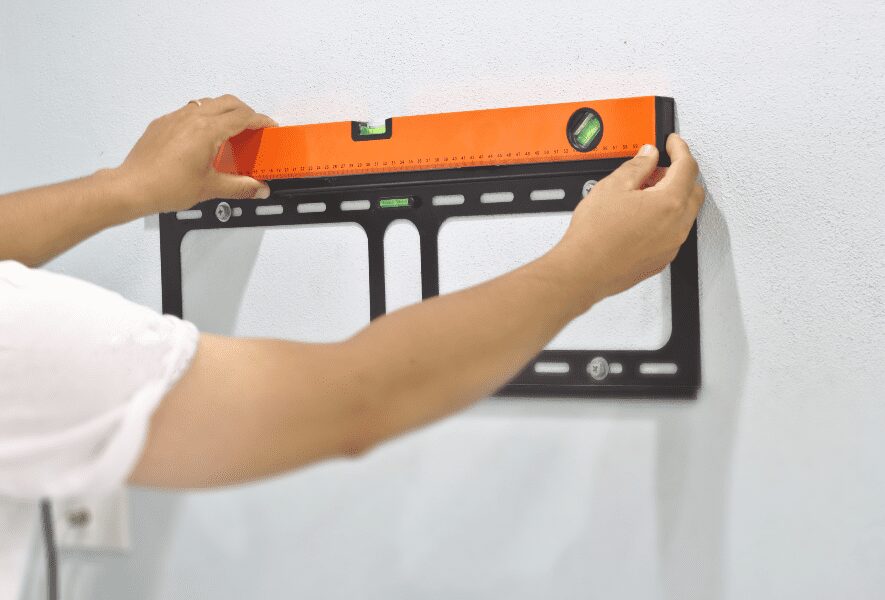
Follow this up by measuring the distance between the top and bottom holes on the TV mount and lining up the two points on your selected wall studs. These will be your pilot holes. Use a level and tape measure to ensure that they are not only evenly spaced on both studs, but that they are also level.
Then, using the mounting bracket as a frame, place the bracket flat against the wall and align the screw locations with the marks. Test the positioning of the bracket when finished.
This will provide the template you will need to start affixing the mounting bracket to the wall.
Once you’re absolutely sure all the measurements are clean, pre-drill your holes in the marked positions.
Mount the TV Bracket to the Wall
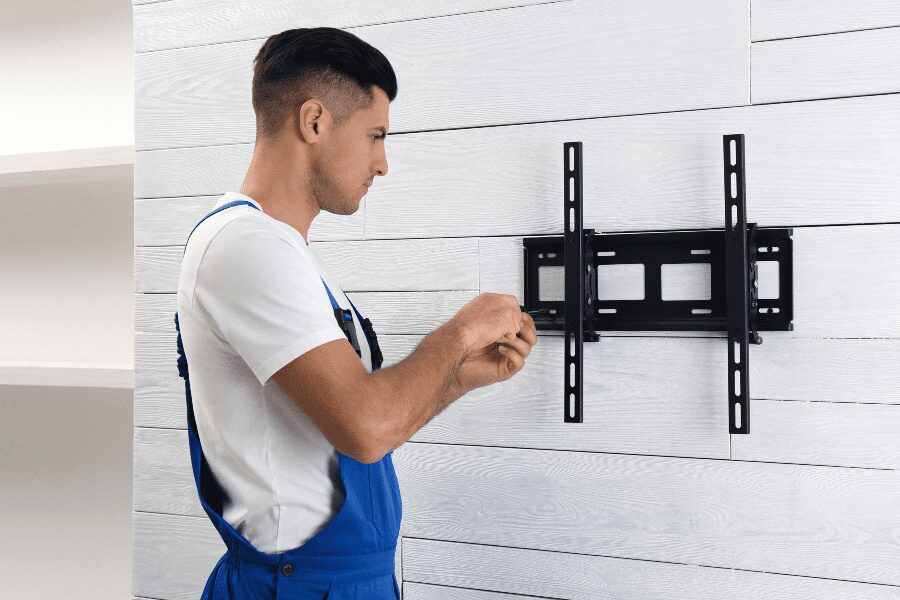
Place the mounting bracket to the wall, aligning it with the newly drilled pilot holes, and drive the provided mounting screws into the holes. You want to make sure that the screws are tight enough so the bracket doesn’t shake while on the wall, but not so tight that it starts to warp or sink into the drywall.
After you’ve finished, check the bracket one last time to ensure it is level.
Attach the Mounting Plate to the TV
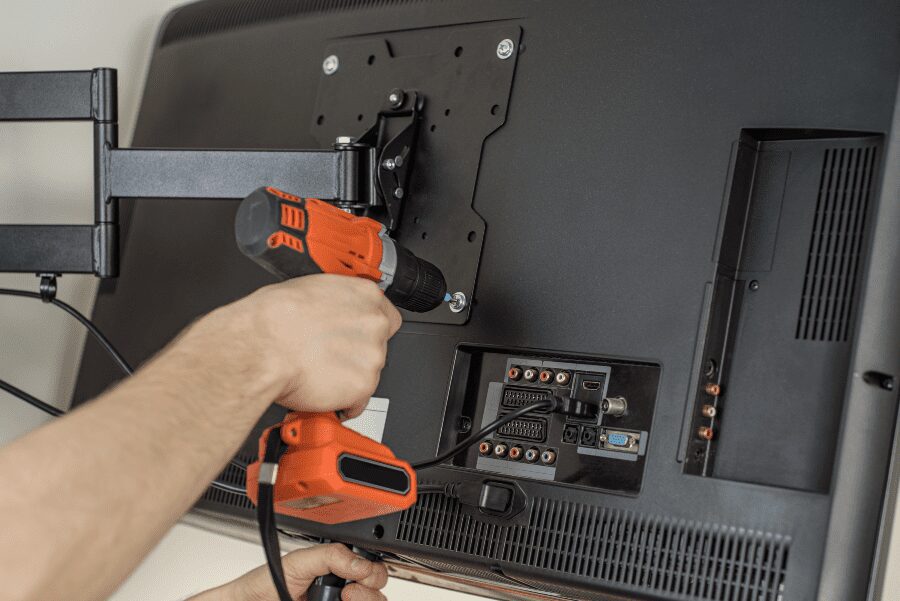
Each TV mount will come with different instructions on how to attach it to your chosen TV. For instance, a fixed TV mount is far less complex compared to attach to compared to a fully articulated TV wall mount.
Check the manufacturer instructions on how to attach the mounting plate to your flat screen TV.
Attach the TV Mounting Plate onto the Wall Mount
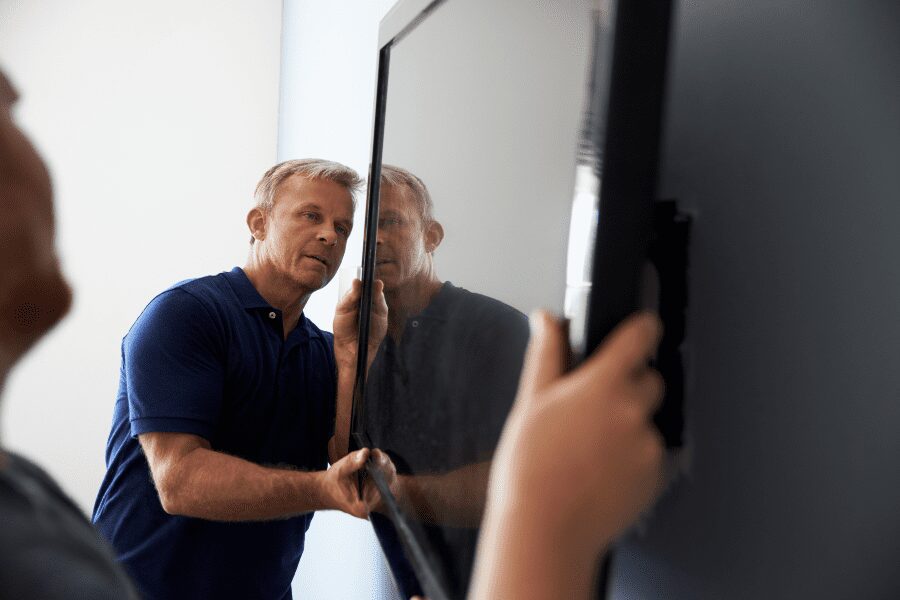
Get some help for this stage. Flat screen TVs today may be far lighter than their earlier ancestors, but that doesn’t mean they’re not still heavy, especially when you’re trying to mount them on a wall.
They’re also fragile, so any mishap may result in buying a new TV. Consult the manufacturer’s guide for this step as well, as how each mounting plate affixes to the wall mount varies from product to product.
Once finished, double-check to make sure that the connection between the wall mount and the flat screen TV is secure.
After that, plug everything in and the TV is good to view.
Creating the Ultimate Home Entertainment Area
Now that you’ve learned how to mount a TV to the wall, the next step is turning that newly christened gathering space into the ultimate home entertainment area. Take that installation to the next level by pairing it with a nice set of loudspeakers or an aesthetic soundbar. With the right investments made in proper audio calibration you can turn just about any space into an immersive media room for clients. Check out our expert guide on what goes in to creating a professional-grade home theater to find out more about what your client’s cozy media den might be missing, and what you can do to elevate your craft to the next level of awesome for your market.
Keep Reading:
Read up on what movies we recommend for testing home entertainment systems
See our list of museum-inspired art TVs for adding extra aesthetics to a room
Or check out this set of projects that feature wall-mounted TVs in the design
